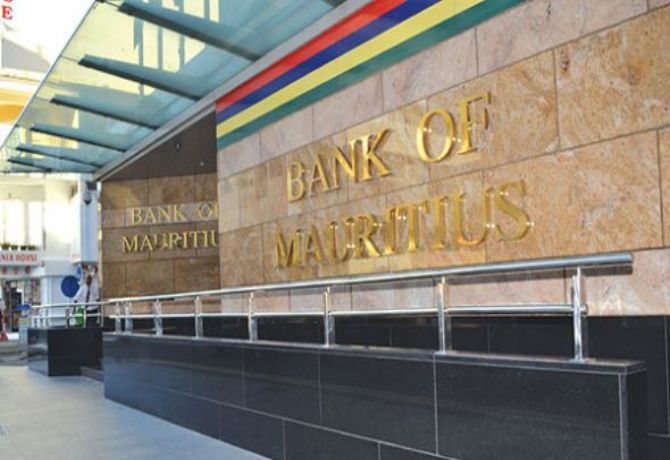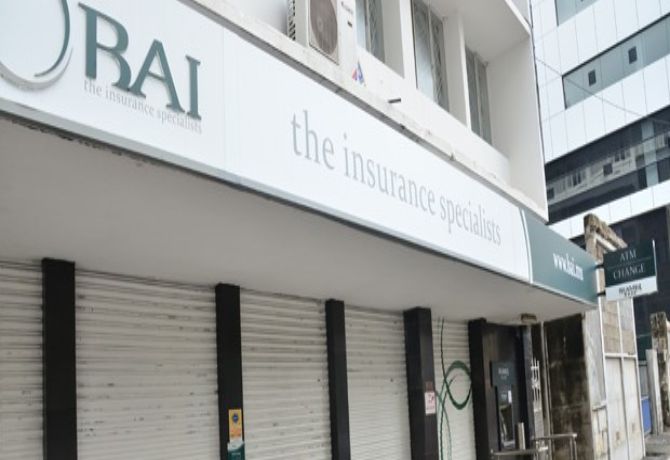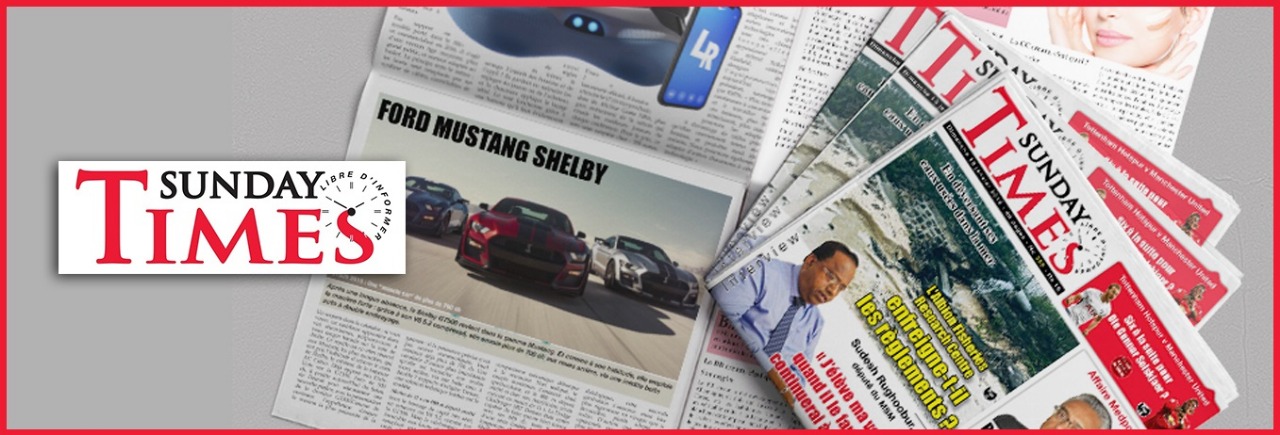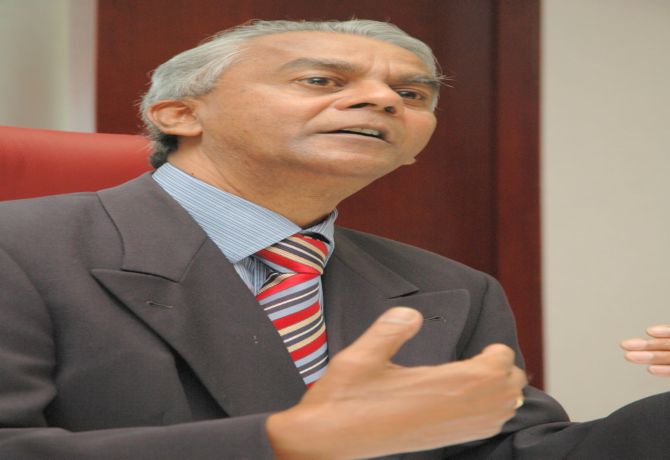MCB confidentialité rapport nTan PAS rendu public
BAI transparence Rapport nTan rendu public
La Banque de Maurice (BM) a sollicité, le 6 mai 2015, l’expertise du cabinet de consultants singapouriens, nTan Corporate Advisory Pte Ltd, afin de faire la lumière sur l’affaire BAI. Huit mois plus tard, soit le 29 janvier dernier, la BM a rendu publique une « edited version » de ce rapport préliminaire. Il convient de souligner que c’est la seconde fois que la BM a eu recours aux services de nTan. En 2003, la Banque centrale avait sollicité, pour la première fois, le cabinet singapourien pour effectuer un « forensic auditing » de la ‘Mauritius Commercial Bank’, cela dans le sillage de l’affaire MCB-NPF. Toutefois, ce rapport n’a jamais été rendu public. En effet, lors d’une ‘Private Notice Question’ (PNQ) du leader de l’opposition, Dr Navin Ramgoolam, en date du 15 mars 2005, le Premier ministre d’alors, Paul Bérenger, devait faire ressortir que la Banque de Maurice, dont le Gouverneur n’était autre que Ramesh Basant Roi, n’était pas en faveur de la publication du rapport nTan, en s’appuyant sur des dispositions légales de confidentialité. La Banque centrale avait même enclenché des démarches en vue d’émettre un « Gagging order » contre Le Mauricien, qui avait publié l’intégralité de l’Executive Summary du rapport. Une démarche qui s’est toutefois avérée vaine.
La précédente position adoptée de la Banque centrale contraste singulièrement avec celle qu’elle a adoptée, vendredi dernier, en rendant le présent rapport public. Pourtant, c’est le même Gouverneur qui est actuellement aux commandités de la BM. Les circonstances dans lesquelles les deux rapports ont été commandés sont, également, quasi identiques. Pour quelles raisons les autorités n’ont pas cru bon de rendre public le rapport sur la MCB-NPF, mais elles se sont précipitées pour publier celui sur l’affaire BAI bien qu’il ne soit qu’un rapport préliminaire ? Et pourquoi avoir choisi de rendre publique une version éditée ? La BoM tente-t-elle de protéger quelqu’un en ce faisant? Autant de questions qui demeurent sans réponse.
Sunday Times revient dans la présente édition sur les deux rapports nTan.
L’affaire MCB-NPF

L’affaire MCB-NPF, qui a éclaté en février 2003, est un des plus gros scandales politico-financiers survenus à Maurice. Elle concerne des détournements de fonds de Rs 600 millions du National Pensions Fund (NPF) et du National Savings Fund (NSF) vers des comptes de tierces parties. La Banque centrale avait alors retenu les services du cabinet singapourien nTan pour effectuer un « forensic auditing » sur toute l’affaire.
Le rapport confirmera des transferts illicites de l’ordre de Rs 3, 3 milliards pour la période allant de 1990 à janvier 2003. Le laxisme avec lequel la Banque centrale avait traité le dossier de la MCB avait été dénoncé par le cabinet singapourien. Nous reprenons ci-dessous les points forts de ce rapport qui avait été publié dans Le Mauricien en date du 15 et 16 mars 2005 :
- There have been a number of instances where MCB has either failed to follow BoM regulations or defied its specific instructions and recommendations. These instances (…) include, interalia:
- The failure to apply for a banking license in respect of MCB FC in defiance of a directive of BoM;
- The failure to report to BoM no less than 15 occupational frauds, that were discovered at MCB during the period from 29 September 1994 to 31 December 2002, in defiance of a directive of BoM; and
- The failure to fully implement recommendations made by BoM in a report issued after it had carried out an inspection of MCB during the period from 26 October 1999 to 25 February 2000.
- Given the leeway allowed by BoM, and its standing in Mauritius, it is possible that, over time, MCB’s position at the pinnacle of Mauritius banking sector and economy allowed its senior management staff to lapse into complacency and perhaps even arrogance.
- Some of the Transfers were made to accounts of MCB Group Companies held at MCB. These Transfers took place before the Transfers from NPF-NSF and other Transfers that are explained in the Report. In a sense, the Transfers to MCB Group Companies are the predecessors of the other transfers.
- A control culture did not exist at MCB and, instead, a casual attitude towards the proper implementation of internal controls was prevalent. Such an environment created a fertile ground for senior management staff to abuse and override internal controls and perpetrate Transfers almost at will.
- The casual attitude adopted by MCB towards the proper implementation of internal controls was to degenerate to a casual attitude towards known frauds. (…)
- (…) The total amount transferred which we have identified thus far, amounted to more than Rs 3.3 billion (Rs 1.8 billion in respect of the MCB Group Company Transfers (during the period January 1991 to December 1992) and Rs 1, 516, 408, 810 in respect of the Investigated Transfers). A large part of the amount was subsequently reimbursed, but this was often done using monies transferred from other customers.
L’affaire BAI

Conclusions de demi-mesure
Le rapport nTan, tel que rendu public par la Banque centrale, est édifiant à plus d’un titre. Pas parce qu’il jette un nouvel éclairage sur les procédés des différentes unités de la BAI mais surtout parce qu’il est truffé de suppositions et de conclusions de demi-mesure. D’abord, il n’établit pas si la BAI opérait effectivement un système de Ponzi. On se souviendra de cette déclaration du Premier ministre, sir Anerood Jugnauth, qui évoquait, au lendemain du démantèlement de la Bramer Bank, un « vaste ponzi de Rs 25 milliards ». Rien de tel n’est mentionné dans le rapport. Les Singapouriens se contentent simplement de souligner que la BA Insurance et le BMF (Bramer Property Fund) « were operating Ponzi-like schemes » durant la période 2010-2013. Entre ‘Ponzi’ et ‘Ponzi-like’, la différence est de taille.
On n’est pas plus éclairé sur les sommes d’argent qui ont été supposément octroyées à Dawood Rawat ainsi qu’à ses proches. “ We have identified clear instances of large sums of advances made to Mr. Dawood Rawat and/ or his relatives and associates and/ or applied for his/ their benefit”, indique le rapport. Il affirme toutefois ne pas pouvoir déterminer si une partie des fonds s’élevant à Rs 17,3 milliards, lui a finalement été payées ou pas. “ We have been unable to determine (due to the constraints noted herein) if part of the funds channeled out of BA Insurance, BPF and Bramer Bank to the related parties in the BAI Group were ultimately paid to Mr. Dawood Rawat and his relatives and associates and applied for their benefit ”, écrivent les Singapouriens. En d’autres mots, ils ne peuvent pas prouver que Dawood Rawat et ses proches ont véritablement empoché les Rs 17, 3 milliards.
Les points saillants du rapport
- While the BAI Group presented itself as a successful conglomerate and was ranked as one of the top groups in Mauritius, it was not profitable and incurred massive multi-year losses until its collapse in 2015.
- In the four-year period between 1 January 2010 and 31 December 2013, the BAI Group lost some Rs 14.7 billion. Even the best capitalised corporate groups in Mauritius would stagger under such losses (and the BAI Group was not one of the best capitalised corporate groups in Mauritius).
- Even though the BAI Group was balance sheet insolvent, it managed (albeit temporarily) to continue operating primarily because it was able to raise enormous amounts of funds from the public to pay off the creditors, policyholders and investors when its obligations fell due.
- BA Insurance and BPF were operating Ponzi-like schemes for the larger part of the Review Period. The instruments used in these schemes were the Super Cash Back Gold policies and BPF Preference Shares offered by BA Insurance and BPF respectively, which promised high returns at low risk to lure investors to put their funds in these financial products.
- BA Insurance was successful in raising funds through the sale of its insurance products. Its most popular insurance product was the Super Cash Back Gold policy. It was marketed as ‘excellent value for money’ and the promised returns were significantly higher than the prevailing bank deposit rates.
- BA Insurance recorded a net fair value gain of some Rs 4.7 billion arising predominantly from its equity investment in BA Kenya, based on the increase in the price of BA Kenya’s shares which were listed on the Nairobi Securities Exchange of Kenya. In the absence of further information, we are unable to ascertain the reasonableness of the fair value gain on this investment.
- As at 31 December 2011, BA Insurance owned shareholdings of 76% in Bramer Bank, 69% in MLC and 100% in BHCL. During the Review Period, BA Insurance recognized a cumulative net fair value gain of some Rs 4.8 billion on its investments in Bramer Bank, BHCL and MLC.
- BA Insurance’s Audit Committtee and KPMG were clearly aware of the recoverability issues concerning the amount owing by BA Investment, as is apparent from KPMG’s FY 2010 and FY 2012 Presentations to the Audit Committee. Surprisingly, KPMG’s observations on the questionable recoverability of the amount owing by BA Investment did not seem to deter BA Insurance from advancing more cash to fund BA Investment.
- Given that the issues identified by KPMG had surfaced as early as in F2010, it is most regrettable that remedial steps were taken more timeously. If KPMG had taken a stricter stance against BA Insurance in FY2010 (for instance, by reporting the problems it had identified to the FSC), the FSC might have been able to intervene at an earlier stage to prevent further policyholders’ funds from being drawn into the Scheme, Instead, BA Insurance had free rein to raise some Rs 35 billion from FY2010 to FY2014in policyholders’ funds to fulfil the funding purposes of the BAI Group and which perpetuated the Scheme.
- The BAI Group was accumulating losses which left it with liabilities that exceeded assets by some Rs 1.2 billion as at 31 December 2010 and some Rs 12 billion as at 31 December 2013. Through its various schemes, the BAI Group was able to conceal its massive losses and obscure its true financial position. However, the accumulated deficit continued to grow such that in 2015, the BAI Group inevitably collapsed under the weight of its huge losses and the unsustainable liabilities.









![[Beryl Rose] Hassam Choychoo s’est éteint à 75 ans](https://sundaytimesmauritius.com/wp-content/uploads/2025/06/503203338_602562678981625_1382864677359506026_n-150x150.jpg)

![[Lutte contre l’insécurité] Le PM annonce une refonte en profondeur de la police et une tolérance zéro face au crime](https://sundaytimesmauritius.com/wp-content/uploads/2025/06/force-policiere-e1750504149483-150x150.jpg)

![[Beryl Rose] Hassam Choychoo s’est éteint à 75 ans](https://sundaytimesmauritius.com/wp-content/uploads/2025/06/503203338_602562678981625_1382864677359506026_n-100x70.jpg)

![[Lutte contre l’insécurité] Le PM annonce une refonte en profondeur de la police et une tolérance zéro face au crime](https://sundaytimesmauritius.com/wp-content/uploads/2025/06/force-policiere-e1750504149483-100x70.jpg)